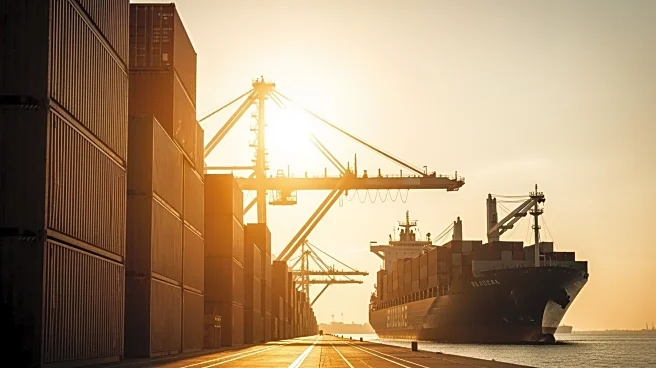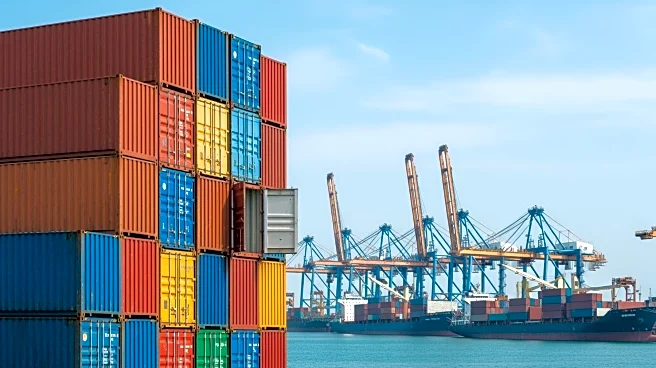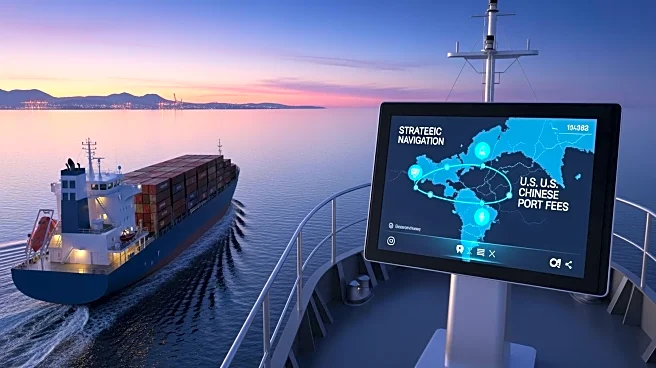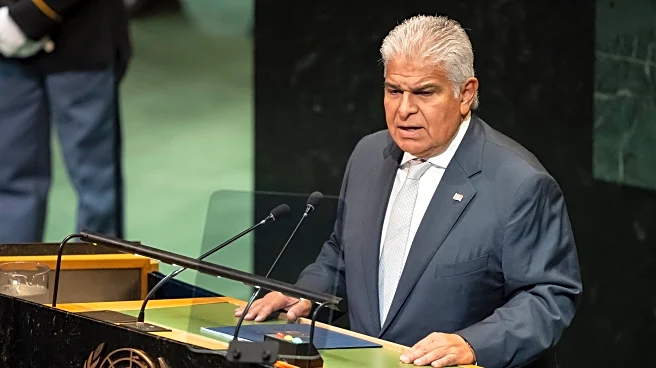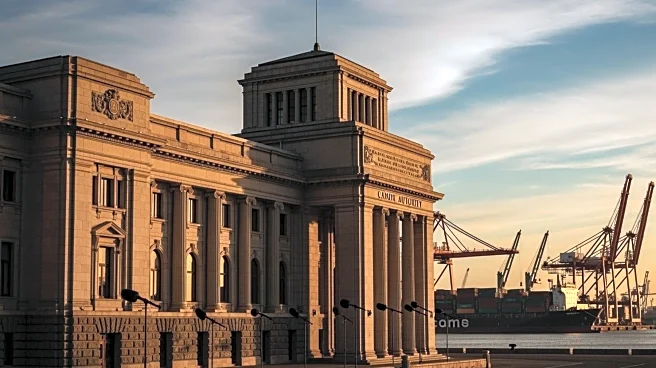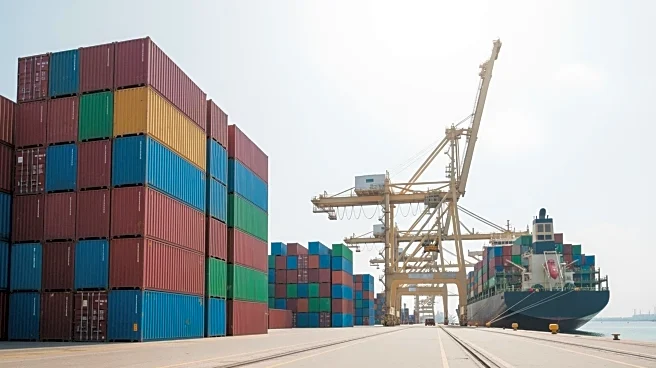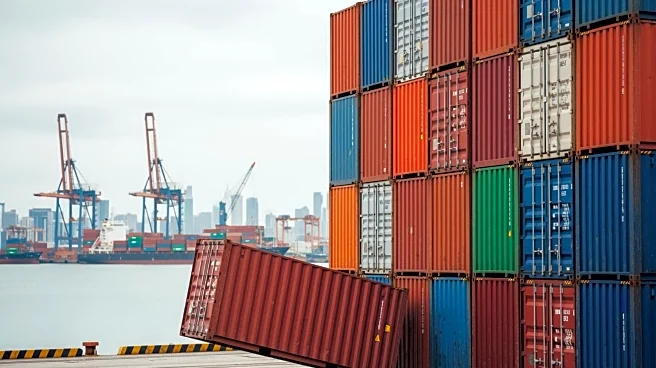What's Happening?
The American Association of Port Authorities (AAPA) has expressed strong opposition to the recent revisions proposed by the U.S. Trade Representative regarding tariffs on cargo handling equipment from China. These tariffs, which include a 150 percent
increase on items such as gantry cranes and terminal tractors, are seen as a significant barrier to port modernization and expansion in the United States. AAPA argues that these tariffs will not encourage domestic manufacturing but will instead delay necessary upgrades and expansions at U.S. ports. The association is advocating for the Trump administration to reverse these tariffs and instead support initiatives like targeted tax credits and funding for port infrastructure to foster domestic production of essential equipment.
Why It's Important?
The imposition of high tariffs on cargo handling equipment is likely to have a profound impact on the U.S. maritime industry. By increasing costs, these tariffs could hinder the ability of ports to modernize and remain competitive globally. This could lead to reduced efficiency and higher operational costs, which may ultimately affect the broader economy. The AAPA's call for reversing these tariffs highlights the need for a balanced approach that supports domestic manufacturing without compromising the growth and modernization of U.S. ports. The situation underscores the importance of strategic trade policies that align with national economic and security interests.
What's Next?
The U.S. Trade Representative is currently accepting comments on the proposed changes to the fee program until November 12, with the aim of finalizing the tariffs by December 2025. This period provides an opportunity for stakeholders, including port authorities and industry groups, to voice their concerns and potentially influence the final decision. The outcome of this process will be crucial in determining the future trajectory of port modernization efforts in the United States. If the tariffs are implemented as proposed, ports may need to explore alternative strategies to offset increased costs, such as reducing workforce training or capital investment.
